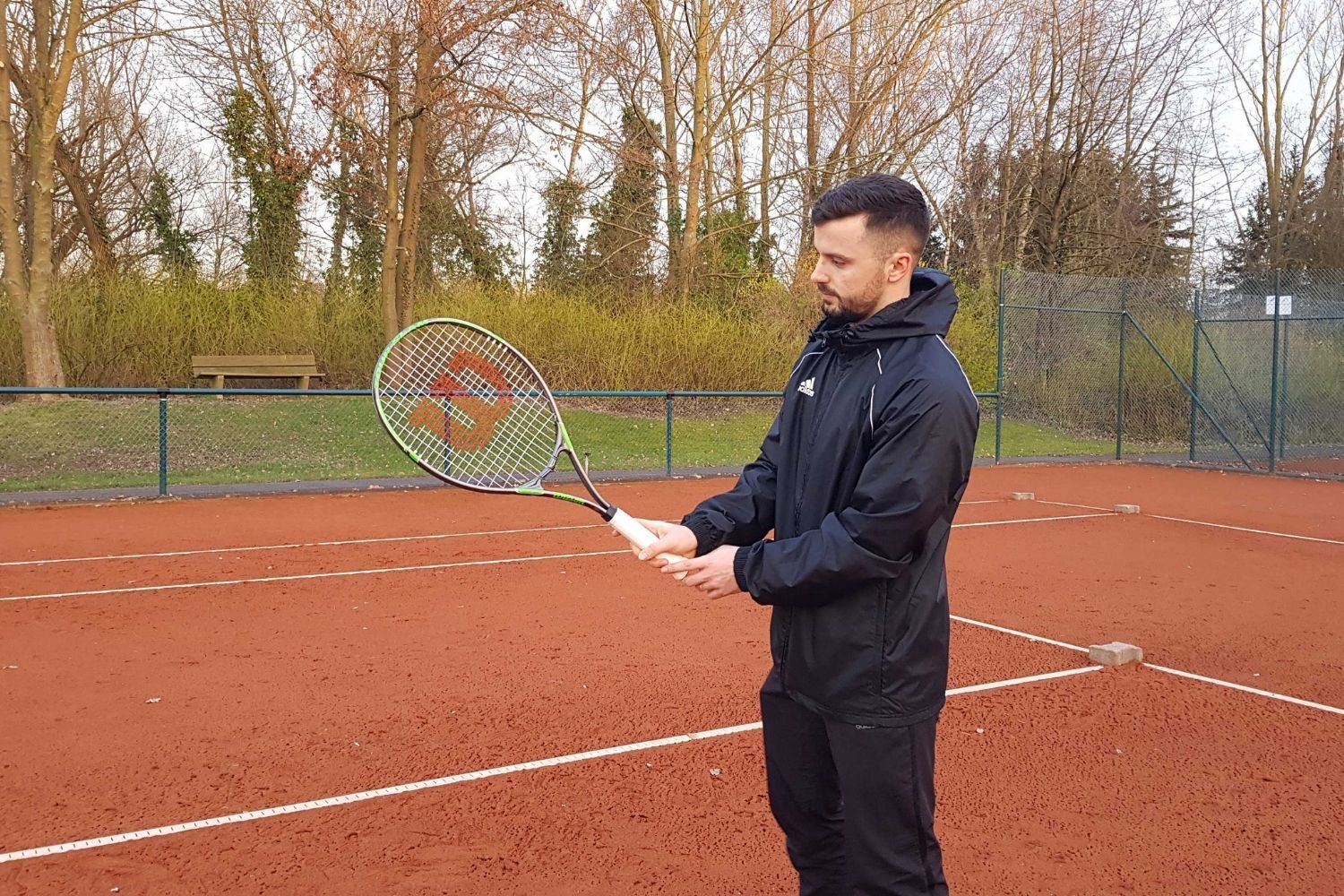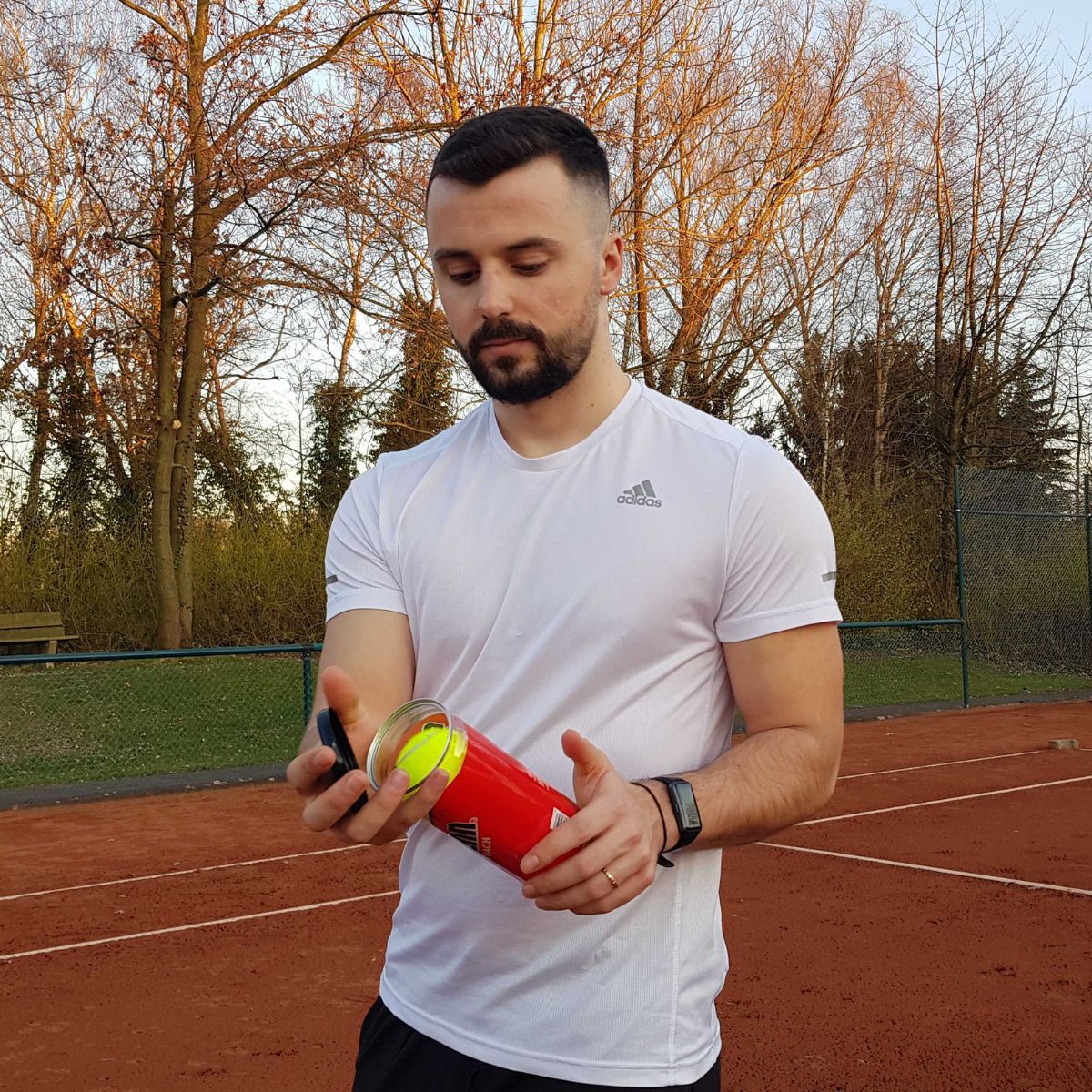- There are 8 different sides, or bevels, that you can hold a racket on.
- The most common forehand grips are continental (holds like a hammer), eastern (shaking hands with the racket), and semi-western (index finger at fourth bevel).
- The western grip is good for generating topspin but requires more precision.
- Backhand grips include two-handed and one-handed. The two-handed backhand is easier to learn but limits reach for wide shots.
The chances are that if you stumbled across this article, you want to improve your technique on how to grip a tennis racket. Whether you are a beginner or an advanced player, there is always new information to learn and ways to improve your game. Long gone are the days when even the professional players used only one technique.
Nowadays, tennis is more competitive than ever, athletes are stronger and faster like never before, and even the strategies and equipment of the game have drastically changed.
However is important to point out that learning how to hold a tennis racket properly is not mission impossible, even if you have never played before. There are several different tennis grip types, which I’ll explain in this article. Keep reading on, and with a little bit of practice on the field, you will learn the proper way to hold a tennis racket in no time.
Tennis Racket Anatomy
First things first! To perfect your racket grip, you need to learn the anatomy of a tennis racket. Even though the game has evolved since the early days, the racket form has remained pretty much the same.
The main parts of the tennis racket are the head, the shaft, and the handle. Although these components have their importance and features, I won’t get into many details here.
The handle has eight sides, called bevels, and serves as a guide to learning how to master the racket grip. You can change the grip by changing the position of your hand on different bevels.
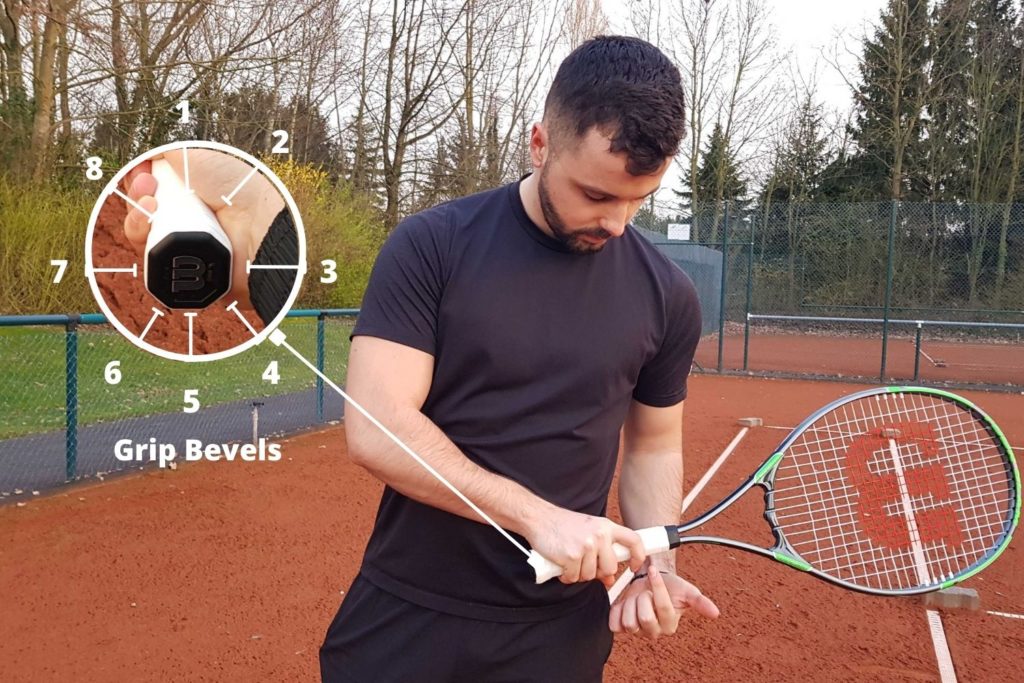
The tennis racket base it’s not round but octangular. Each of the bevels is numbered, so learning the position of the racket grip is relatively easy. For the left-handers, the numbers are mirrored backward, but the positions are still the same.
Forehand Tennis Grips
Often considered players’ favorite grip, this is probably the most natural way to hold a tennis racket. The correct grip of your forehand will hugely impact your game, the spin of the ball, and even as far as your game style. Most elite players use mostly forehand tennis grip, like Federer, Nadal, or Serena Williams.
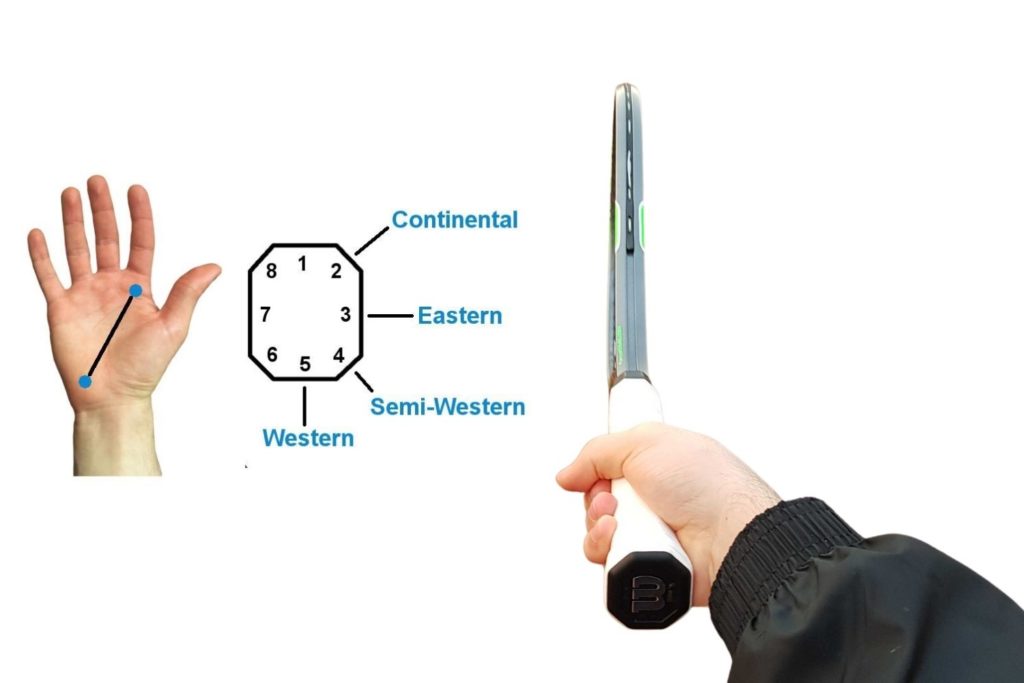
On the forehand, tennis grips have a wide range of options, so it’s up to you to find out which is your favorite. Listed below, you’ll find all the information you need on how to grip a tennis racket properly and the main differences between the tennis grip types.
Continental Grip
Probably, the most basic and standard grip for a tennis racket. It used to be the most widespread racket grip amongst professional players in the last century. Eventually, it died out as the athletes became more and more competitive since the continental grip made it difficult to use for the topspin.
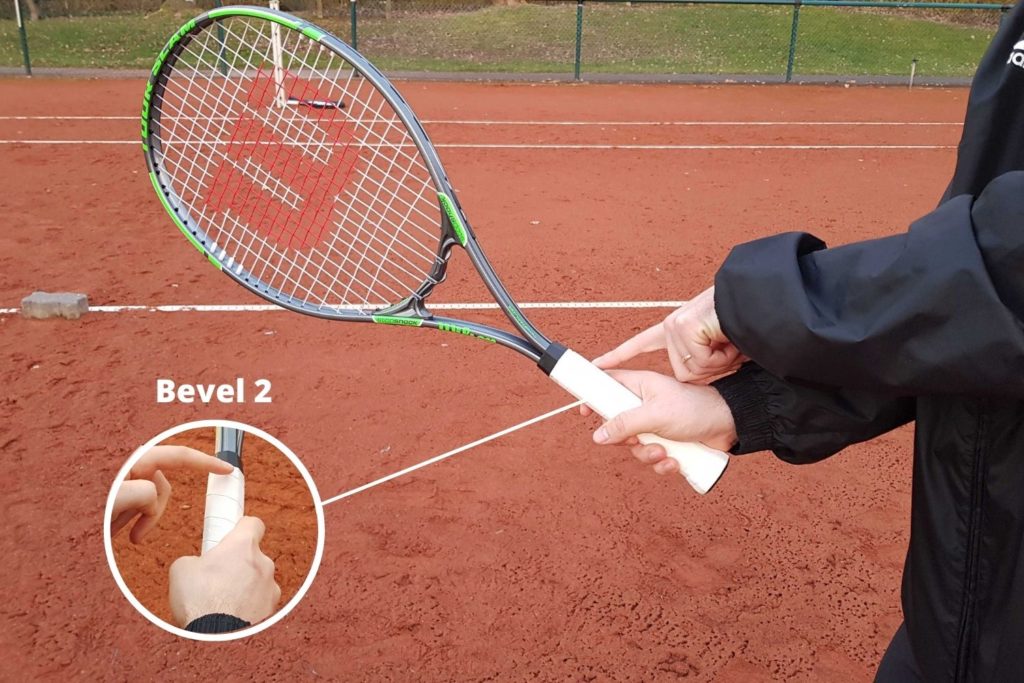
However, the continental grip is great for serves, volleys, or smashes. This technique makes handling the low bouncing balls easier without changing much in the grip position for the other shots.
How to hold a tennis racket on the continental grip? For the continental grip, hold the racket like you would hold a hammer. It sounds kind of silly, I know, but I promise you, that’s what any tennis professional would describe this technique, as well.
For those who are a little more insightful on tennis technical terms, to practice the continental grip, place the index finger at the second bowel and wrap the racket handle with the other fingers. And there you have it. Now all you need is practice.
Eastern Grip
Roger Federer prefers the eastern grip, so if it is good enough for him, it is good enough for the rest of us. This is probably the most beginner-friendly amongst tennis grip types.
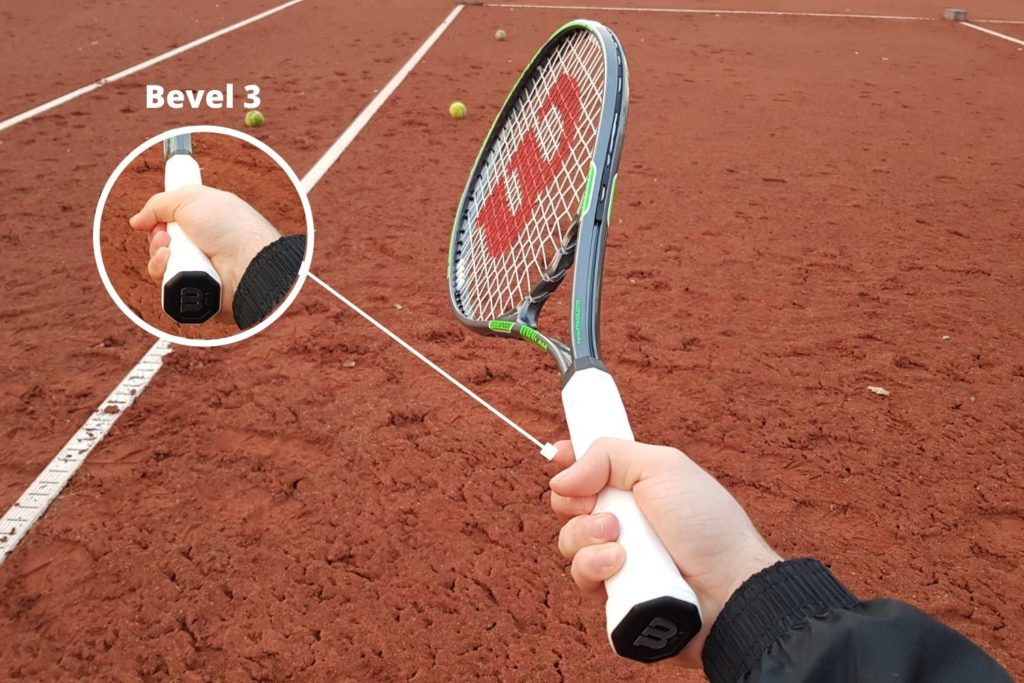
The eastern tennis grip makes it much simpler to change to other grip positions during the game. Another advantage of this technique is switching between serves and volleys with ease. The eastern grip is perfect for those players who prefer a more aggressive game style, forcing the opponent to stay in defensive mode. However, this tennis grip makes it harder to handle the higher bouncing balls.
Practicing the eastern forehand grip and holding a tennis racket is quite easy. Imagine as if you are shaking hands with the racket in a relaxed way. Place your index finger’s base knuckle on the third bevel, and wrap your fingers around the handle.
Semi Western Grip
The golden mean between western and eastern, the semi-western grip, has risen in popularity as more and more top athletes use it during their matches. This technique is a great option because it allows great spin opportunities while using less force.
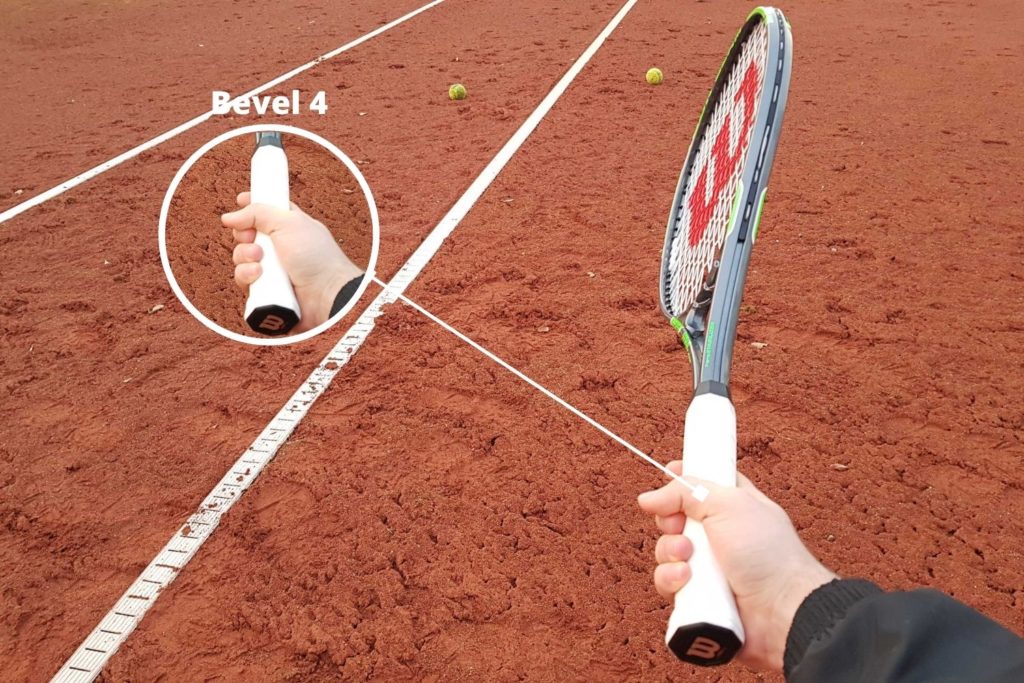
It also allows the players a higher and easier grip change whenever they transition from a forehand to a volley position. It can help you have a better defense strategy with higher bouncing balls. A semi-western grip gives the player better flexibility with the wrist, which means fewer possible injuries. That’s great news for both beginners and advanced, if you ask me.
So how do you form a proper semi-western tennis grip? Place the palm side of your index finger at the fourth bevel, and wrap the rest of your finger around the handle. And there you have it!
Western Grip
The western grip is just as popular amongst top athletes as it is amongst junior players that are tennis enthusiasts. Even though it is considered a little extreme because it requires a lot of force while using the racket, this grip is excellent for generating many topspins.
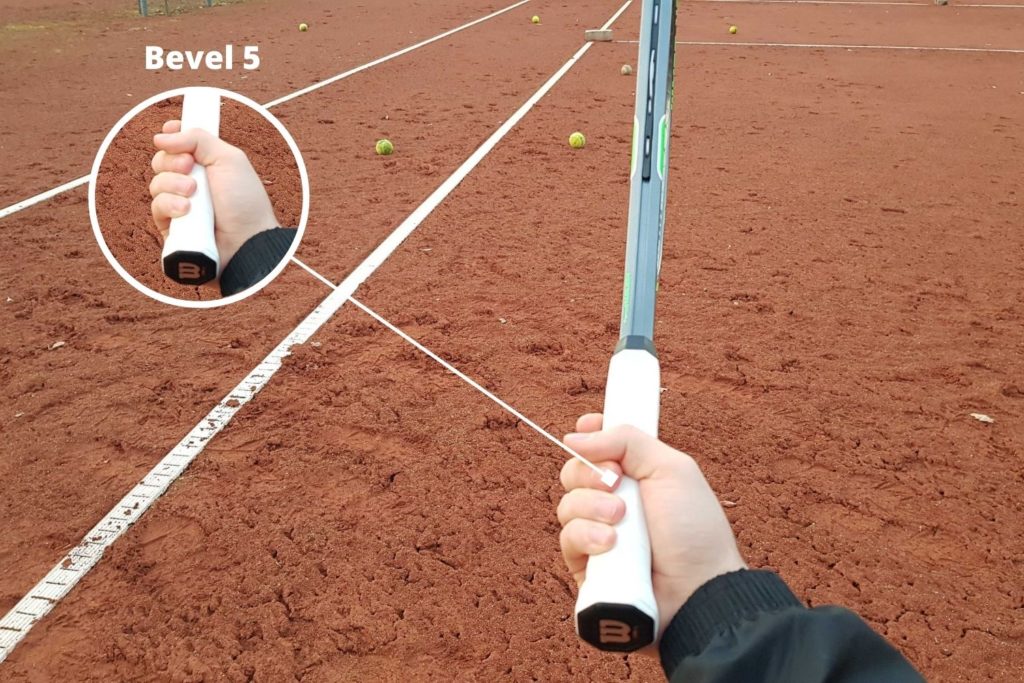
The western grip makes it much easier to deal with higher bouncing balls. This is probably the ideal grip when playing in the baseline since this strategy works just fine on slower court surfaces. However, the western grip it’s not suitable for beginners since it requires a lot of force, practice, and precision.
So how to grip a tennis racket to form the western grip? Place the palm side of your index finger in the fifth bevel of the racket, position the base of the racket in your palm, and wrap your fingers around the handle. It takes a bit of practice and time to master this grip, but I promise you, it’s worth it.
How to Hold a Tennis Racket Backhand
The backhand grip might be difficult at first, but it’s important for your tennis skills. This type of racket grip requires the player to hit across the body, and that’s why most struggle with it.
But with practice and patience, the backhand tennis grip can elevate your game style and skills. Don’t believe me? Take a look at Nadal, Federer, Djokovic, and many other stars, whose backhand technique has made them excel in the field.
Two-Handed Backhand Grip
The easiest grip to learn, especially for beginners, so I recommend you start practicing the two-handed backhand grip first and then move on to the other technique. This tennis racket grip increases the players’ control and adds more power during the hit. It’s great when it comes to returning serves or handling lowball shots. However, keep in mind that the wide shots are harder this way since it limits the players’ reach.
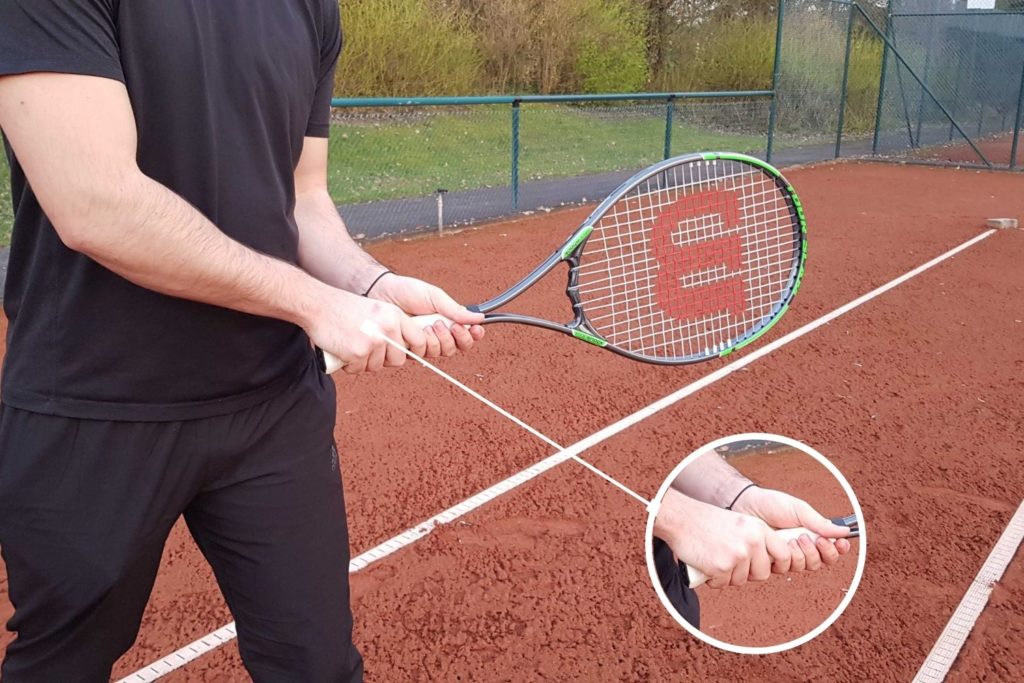
To practice the two-handed backhand grip, place your dominant hand like you would form the continental grip (your index finger at the second bowel, and wrap the other fingers around the handle). Then lace your non-dominant hand index finger at the seventh bevel in a relaxed way.
One-Handed Backhand Grip
The one-handed backhand grip requires a lot of skills, strength, and coordination. Some of the best players in the world have perfected this technique, making it rise in popularity. But to master it, you need practice and patience.
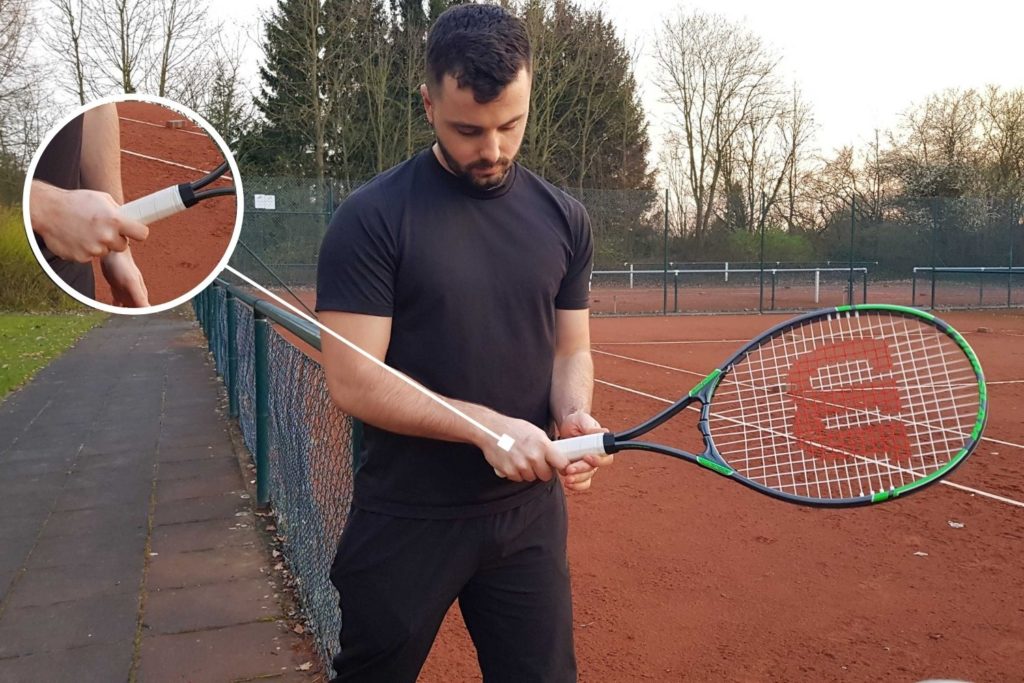
The players who use the one-handed backhand grip have superiority in many different angles, generate more topspins, and have greater depth and adder power when hitting the ball. However, you may find it more challenging to return the serves or manage the higher bouncing balls when using the one-handed backhand grip.
How to grip a tennis racket to form a one-handed backhand grip? Make sure to place the palm of your index finger at the racket’s first bowel, while keeping the handle in a parallel way with the rest of your knuckles, excluding here only the thumb. The handle’s base should be at your palm as you wrap your finger around it.
The one-handed backhand grip allows the players to experiment with their racket grip by adjusting the index finger between the first and eighth bowel to generate more topspin.
